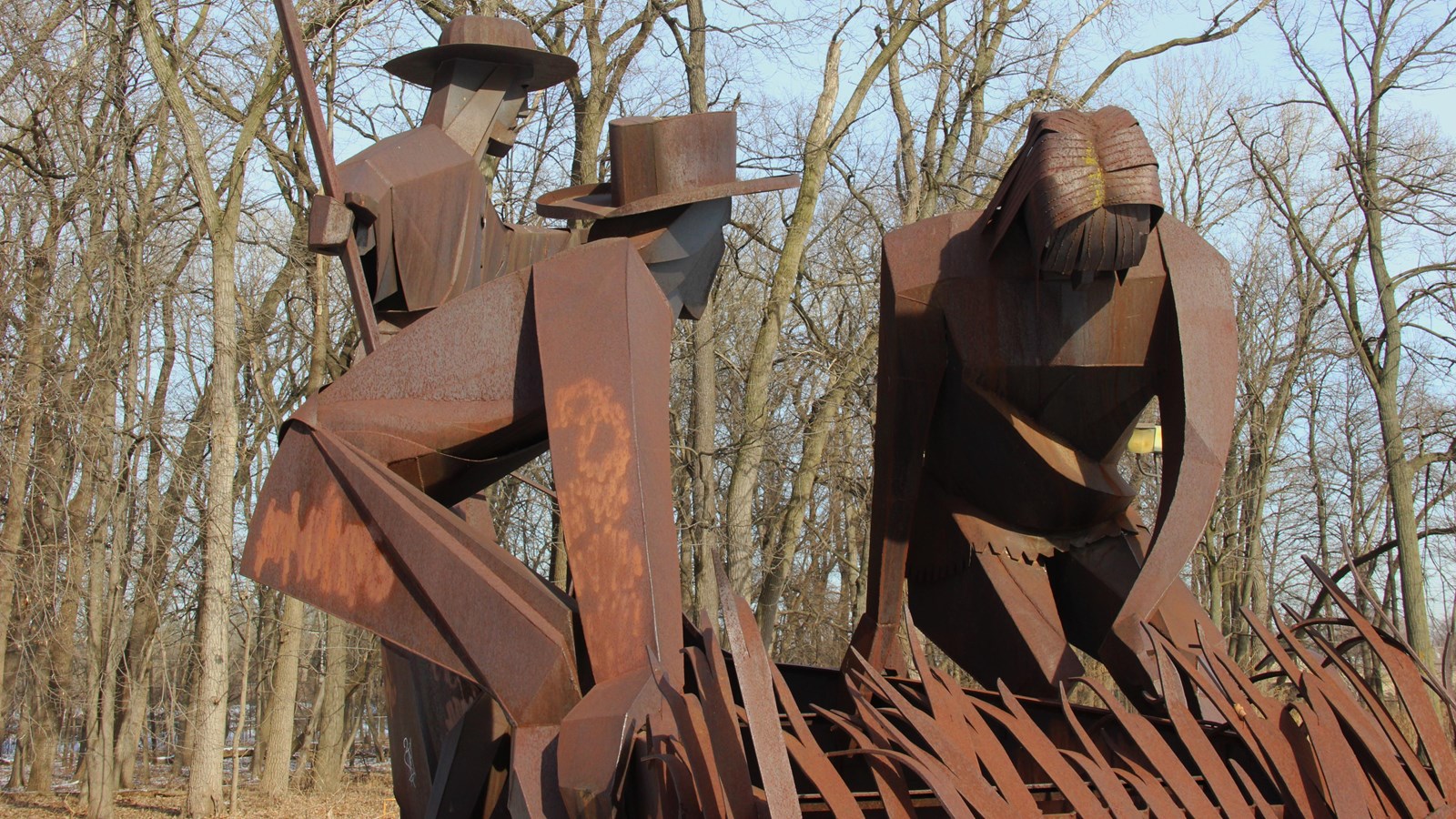Last updated: August 28, 2020
Place
Chicago Portage National Historic Site

Forest Preserves of Cook County
Parking - Auto, Scenic View/Photo Spot, Trailhead
The Chicago Portage, a low and short divide between the Great Lakes and the Mississippi River systems, has been described as one of the “keys to the continent.” Following the lead of generations of Native Americans, explorers Marquette and Joliet first crossed the Chicago Portage in 1673. One of the most important travel routes of the mid-continent, the portage was a significant factor in the development of the United States interior. During early European exploration, natural waterways were often the easiest route across the North American landscape and places where canoes and trade goods could easily be carried around barriers or across multiple rivers were critically important. Along with the opening of the Illinois and Michigan Canal in 1848, the portage became the transportation link that spurred the growth of the City of Chicago.
In recognition of its historic and cultural importance, the Chicago Portage was dedicated a National Historic Site in 1952, making it a unit of the National Park System in non-federal ownership.
It is difficult to imagine how this area must have looked during the time of early interactions between Native Americans and French voyageurs. However, fragments of the past still exist within the heart of the Chicago metropolitan region. Forests, prairies, and marshes of the Forest Preserves of Cook County provide a glimpse of the land, plants, and animals of an earlier time.
Near Harlem Avenue and 47th Street in Lyons, Illinois, the Des Plaines River turns away from Lake Michigan to flow toward the Mississippi River. At this site near the west end of the Chicago Portage, the Forest Preserves of Cook County maintain Portage Woods and Ottawa Trail Woods, which contain approximately 300 acres of forested area. This is the last remnant of that portage route that still appears much as it did when Native Americans and European explorers traveled through it.
Though hardly recognizable, the old portage is as important today as ever. The Chicago Sanitary and Ship Canal, major railroads, the Stevenson Expressway, and industrial corridors all currently line the portage route. The Illinois and Michigan Canal became the focus of the nation’s first National Heritage Corridor, and the Chicago Portage is an integral part of this unique historical, recreational, and economic entity.
Today, visitors to Portage Woods can enjoy walking and hiking on natural surface trails, cross-country skiing, scenic overlooks, birding, volunteer stewardship opportunities, cultural interpretation signage, and connections to the Salt Creek Trail System.
For more information on recreation amenities and programming activities at the Chicago Portage National Historic Site, visit the Forest Preserves of Cook County website.
About the Forest Preserves of Cook County
The Chicago Portage and Ottawa Trail Woods are only a fraction of the nearly 70,000 acres within the Forest Preserves of Cook County. Established in 1915 to preserve and protect natural lands for the enjoyment and education of the public, the Forest Preserves include not only forests, but prairies, wetlands, and other natural landscapes—including some of the rarest and highest quality ecosystems in Illinois. Recreational amenities include lakes for fishing and boating, five campgrounds, 350 miles of paved and unpaved trails, and six nature centers that offer interpretive and educational programs.
